
None of us like to think about what will happen after we or our loved ones die. But many of us are trying to live a green and eco-friendly life – and a sustainable life should end with a sustainable funeral.
All too often, funerals become costly affairs – not only in financial terms but also environmental ones. Planning a sustainable funeral means rejecting environmentally damaging practices and finding more ethical and responsible options.
Fortunately, as more and more people wake up to the damage we are doing to others and to the planet, green funeral options are on the rise. It is now easier than ever to make the right choices for arrangements around death. In this article, we will explore the range of options available for sustainable funerals – from what happens with the body, to wakes and house clearances. It may not be a pleasant topic, but it is something that will become relevant to us all.
Whether you are considering what to do after the death of a loved one, or thinking about your own sustainable funeral, read on to find out more.
What is a Sustainable Funeral?
We all like to imagine that we have a positive impact during our time on earth. After death, we don’t want our corporeal form to leave a damaging legacy – but, many current practices surrounding both burial and cremation mean people often do leave a negative legacy of environmental pollution behind them for future generations. This is the last thing we should wish for anyone.
A sustainable funeral is one that rejects such harmful practices, and instead adopts alternatives. They employ less damaging practices, allowing individuals to leave a legacy of ongoing life, rather than contributing to environmental degradation.
Sustainable funerals do not:
❌ Release greenhouse gases into the atmosphere, contributing to global warming.
❌ Allow poisonous substances to enter our ecosystems and pollute the environment.
Instead, they allow a human body to become part of the Earth’s natural systems, allowing death to bring new life, letting us continue to contribute to making our world better, even after death.
Burial or Cremation?
In the UK, there are generally only two options of what happens to our bodies: cremation, or burial. This choice will often hinge on personal preference, sometimes with religious beliefs taken into account.
Around 78% of funerals in the UK are currently cremations. There are a number of reasons for this, but it often comes down to cremation being the cheaper option: average UK cremation costs are £683, while a burial costs, on average, £1,645.
The Problems with Cremation
But there is a growing awareness that cremation (as currently carried out) is not a sustainable option:
Energy Use and Emissions
A huge amount of energy is required to cremate a human body: temperatures of 760-1150 degrees Celsius for 75 minutes. This generally uses around 285 kWh of gas, and 15 kWh of electricity – roughly equivalent to the energy usage of a single person in a domestic setting over a whole month.
An alternative, burning fossil fuels, results in high emissions of greenhouse gases. Globally, cremation emits over 6.8 million metric tons of carbon dioxide annually, accounting for around 0.02 percent of world carbon dioxide emissions.
In addition, crematorium buildings can also consume a lot of energy since they are heated and lit – not always sustainably – for the comfort of mourners and guests. Due to their emissions, crematoria are also often separate from areas of human habitation, which may increase associated carbon costs through transportation to the location. Additionally, lands surrounding crematoria may not always be managed sustainably.
Other Harmful Pollutants
Another global problem with cremation is mercury emissions: when mercury from dental amalgam is incinerated, it is emitted into the air through the incinerator stack. This mercury may then be inhaled, or precipitate into waterways, accumulating in the aquatic food chain and even potentially ending up on our plates.
However, since signing the Oslo-Paris (OSPAR) agreement, the UK government halved crematoria’s mercury emissions by 2012. By 2020, all UK crematoria (there are roughly 240) should emit no mercury. Nevertheless, though mercury pollution from cremation here should no longer be an issue, though it remains a problem elsewhere in the world.
Other harmful substances can also still enter the environment through cremation. For example, chipboard coffins are often bonded with a resin derived from formaldehyde – itself used in traditional embalming practices – causing the substance to enter the atmosphere when burnt. Polychlorinated dibenzodioxins (PCDDs) and polychlorinated dibenzofurans (PCDFs), known carcinogens, are also emitted from crematoria. A study by the Cremation Association of North America has found that filtering crematorium fumes has little effect on the toxins released.
Furthermore, the ashes of cremated remains can contain all sorts of other potentially harmful substances. Calcified compounds within cremated remains, for example, can contain metals such as lead, boron, cadmium, chromium, lithium, magnesium, cobalt, copper, tin, manganese, nickel, and strontium. When concentrated in a certain location (say, in soil), these metals have the potential to harm the environment.
It is clear that cremation is not a sustainable option. But is burial any better?
The Problems with Traditional Graveyard Burial
Though traditional cemetery burial has a lower carbon cost than cremation, there are still a number of environmental issues around it. Traditional embalming chemicals such as formaldehyde, and contaminants from many coffins, also enter the environment when bodies are buried. Over time, these can leach through the ground and enter water sources. When bodies are concentrated in cemeteries or graveyards, these negative environmental impacts can be compounded.
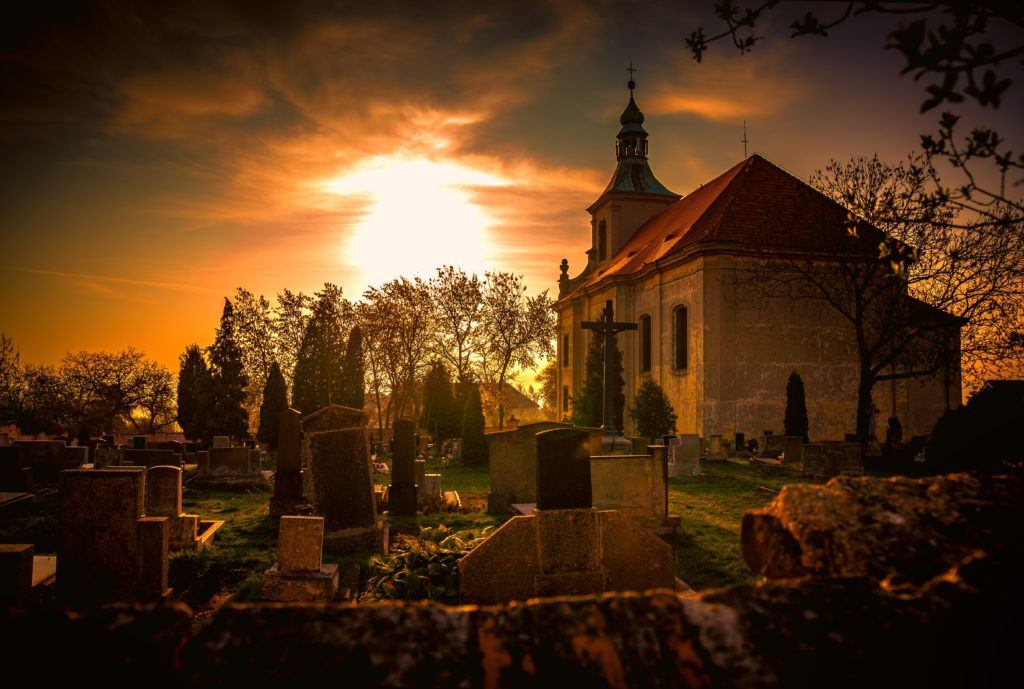
There are also ethical concerns over using land for burial when it could better be used for other purposes. Plus, increased use of materials and resources for coffins and the other paraphernalia associated with traditional burial is problematic too.
Neither cremation nor traditional cemetery burial offers a sustainable solution. Fortunately, however, there are a number of more sustainable alternatives to consider.
More Sustainable Cremation
Though burial is generally a greener and more ethical option, many people instinctively dislike the idea of their bodies ending up beneath the ground, and may still prefer cremation.
Here are some suggestions to help reduce the impact of a cremation, rather than opting for any kind of burial:
Resomation
Resomation, also known as aquamation or water cremation, dissolves the body in a water lye solution, through a process of alkaline hydrolysis. Though legal in many areas of the US, it is yet to be legalised in the UK. However, its introduction here could be a step nearer following extensive testing.
Resomation works by immersing the body in a gentle solution of 95% water and 5% alkaline. Heated to 160 degrees Centigrade in a pressurised environment (to prevent boiling), after around four hours, all that’s left is ash from the bones’ calcium phosphate, and a bio-fluid to be disposed of. The liquid contains no traces of DNA.
According to Sustain, this alternative to cremation can cut a funeral’s greenhouse gas emissions by around 35%, making it an option for sustainable funerals in future.
Cryomation
Cryomation is a fully automated process which involves immersing a body in liquid nitrogen at a temperature of -196 degrees Celsius. The body becomes brittle and breaks up into small particles which are freeze dried and placed into a biodegradable container for burial. They will take up far less space than a traditional burial, and break down to nothing within a year, returning the body’s organic material to nature.
Unlike cremation, the cryomation process is powered by sustainably produced electricity, with no fossil fuel usage. This leads to a significant CO₂ reduction, and eliminates the toxic effluents caused by traditional burial.
In June 2019, Cryomation were successful in their grant application to Innovate UK, the UK’s innovation agency, to support the building of the world’s first fully-automated Cryomation Unit. The project commenced in September 2019, with the world’s first operational Cryomation facility due to be tested and delivered in late spring 2021.
Recomposition/Natural, Organic Reduction
This year, Washington state became the first of the United States to legalise another new alternative to cremation: recomposition, or, in plainer terms, human composting. This is akin to a natural burial (more on which below), but bodies are turned to soil mulch through natural and efficient composting processes, and can then be either used, or donated. The process is an abridgement of natural burial’s effects: over around 30 days, in a closed container, optimal conditions for decomposition convert a human body into about a cubic yard of soil.
Starting in Washington in 2020, could this option – perhaps the ideal for cities, where space for natural burial is limited – soon be offered in the UK as well?
Grief to Reefs
Cremation itself may not be the most sustainable way to go. But you can at least make sure that remains are turned into something useful. One option is to transform cremated remains into artificial coral reefs, or ‘reef balls’, which can help to sustain and support marine life. Eternal Reefs allows you to do just that. Coral reefs are under tremendous threat globally, due to pollution and warming oceans, but this could be one way to help support their survival, even in death.
Compressing Ashes into Diamonds
A loved-one’s ashes can be compressed to make diamonds. Of course, compressing the carbon from human remains takes energy – yet making a diamond in this way is far, far more eco-friendly and ethical than digging one up from the ground; these are never blood diamonds.
Creating Music from the Ashes
While not the greenest option available, Andvinyly gives the option of having your ashes, or those of your loved one, pressed into a record – so the music plays on. Vinyl is, of course, a plastic, with all that entails. But this is one piece of plastic (I hope) will not be thrown away.
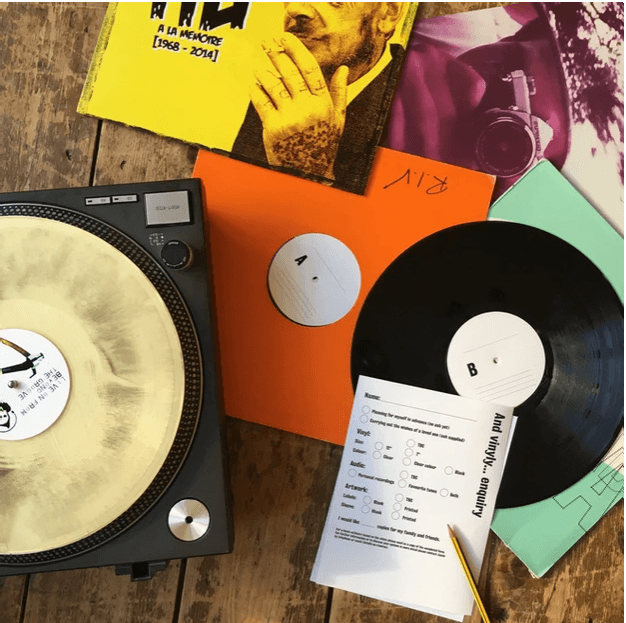
Biodegradable Urns
If you do decide on cremation, and don’t opt to do something so unconventional with the ashes, there are other options. Burying them in a biodegradable urn is one way to make the process a little more sustainable. Bios Urn, for example, offers a biodegradable urn containing a tree seed of your choice; once buried, the whole lot will break down, feeding the growing tree. 100%-biodegradable urns made from vegetable gelatine are also available for ashes deposited at sea.
Sustainable Burial
While some promising options do not involve burial, there are many benefits to a natural and sustainable burial; in spite of the range of options, more and more people are choosing this for themselves or their loved ones.
A sustainable, natural burial differs from a traditional burial in involving no embalming. The funeral industry estimates between 50% and 55% of cadavers in the UK undergo some form of embalming so they can be viewed by relatives. But the future of embalming is uncertain, especially since the EU added formaldehyde to their list of restricted carcinogens and mutagens.
Refusing embalming (which is already prohibited in the Jewish and Muslim faiths) eliminates concerns about pollutants and toxins from the process entering the environment.
A natural burial will also involve greater care over the type of coffin. (A number of natural, biodegradable coffins and shrouds are explored below.) Green burials will never use harmful or polluting materials in the shroud or coffin; everything placed in the ground will simply and harmlessly decompose.
Sustainable Wood Coffins
One option for a sustainable burial is simply to opt for a traditional wooden coffin – but one made from a more ethical choice of wood, from sustainably managed woodlands and forests.
Many traditional, high-end coffins are made from mahogany or other exotic hardwoods, contributing to deforestation and the destruction of precious rainforest trees. What’s more, such timber has to be shipped great distances.
Alternatively, eco-friendly wooden coffins use sustainable wood grown much closer to home. Just be sure, if choosing this option, that the source really was sustainable. You could also choose a coffin made from 100% reclaimed and upcycled solid wood.
Wicker Coffins
Another option is a wicker willow coffin, which, like wooden coffins, are 100% natural and biodegradable. Willow grows quickly, and can be coppiced to ensure that it remains a truly renewable resource. Another advantage is that it can be readily grown and managed in the UK.
Bamboo Coffins
A wide range of woven bamboo coffins are also available for green burials. A great eco-friendly material, bamboo never needs replanting, since it grows back rapidly after being cut – up to a metre a day, in some species. Strong and pliable, with a greater tensile strength than steel, it produces more oxygen than any other plant for its size to weight ratio. Planted in large groves, bamboo can also store four times the CO₂ as a similarly-sized stand of trees.
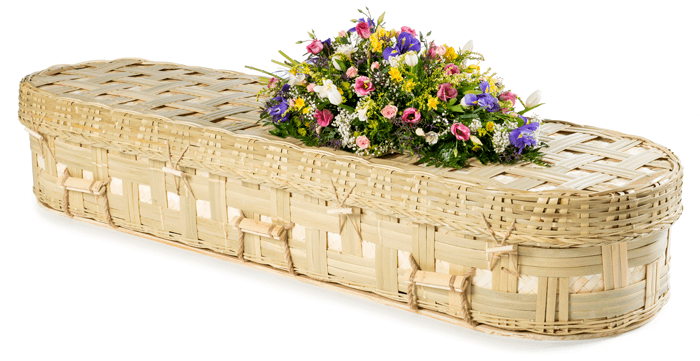
When choosing a bamboo coffin, however, it is important to consider where the bamboo was grown and where the product was made, and the carbon cost of bringing it to the UK (likely from China). Some bamboo products will be better than others when it comes to both their human and environmental ethics.
Other Natural Woven Coffins
In addition to willow or bamboo coffins, you can now also find a wide range of other coffins made by weaving natural plant materials, including:
- Banana leaf
- Cane
- Seagrass (water hyacinth)
- Pandanus (wild pineapple)
- Abaca.
These will all simply rot away, leaving nothing to plague the environment or cause problems for future generations.
Cardboard Coffins
Particularly if money is a concern, a simple, eco-friendly cardboard coffin could be the perfect solution. You can keep things very simple with a plain cardboard design (which could then be added to or decorated in a unique way); alternatively, opt for a pre-designed picture option or wood-grain effect.
As with the previous options, cardboard will simply rot away into the soil; ideal for a green burial. But when it comes to overall sustainability, remember that the cardboard is only as sustainable as its source, so ensure that the source was truly sustainable, and that it was sustainably produced and untreated.
Wool Coffins
You can also choose a coffin made from natural wool (strengthened with a recycled cardboard liner) – another 100%-biodegradable option. Or how about the beautiful Bellacouche Leafcocoon alternative eco coffin, made from wool felt.
Alternatively, you could choose to forgo the coffin altogether; a shroud made from a natural, biodegradable fabric could be another great earth-conscious option for a green burial. Many people are surprised to hear this, but there is no legal requirement in the UK for a coffin or casket. The body should be covered, but how you do so is up to you. The benefit of using a shroud rather than a coffin is that you or your loved one will return even more quickly to the soil. This option, however, will depend on possible restrictions at the chosen burial site (or crematorium).
Choosing a Burial Site
When it comes to a green burial, the burial site is as crucial as the materials and methods chosen with regard to the body.
Burial at Sea
Many people have an image of being buried at sea. This may be difficult in the UK: sea burial is permitted in a few areas, but a license is required, and only a few are granted each year.
Burial in a Natural Woodland or Meadow
The number of green burial sites around the UK is increasing, as is their popularity with those wanting to be sustainable and natural in death.
Some of these green burial sites are managed by local authorities, some by individual private landowners, and some by large businesses. As such, they differ extremely in what they offer, how they are run, and their longer-term plans. If you are looking for a green burial ground, it is best to opt for one that is a member of the Association of Natural Burial Grounds, which adhere to various codes of practice to maintain suitability for natural, sustainable burial.
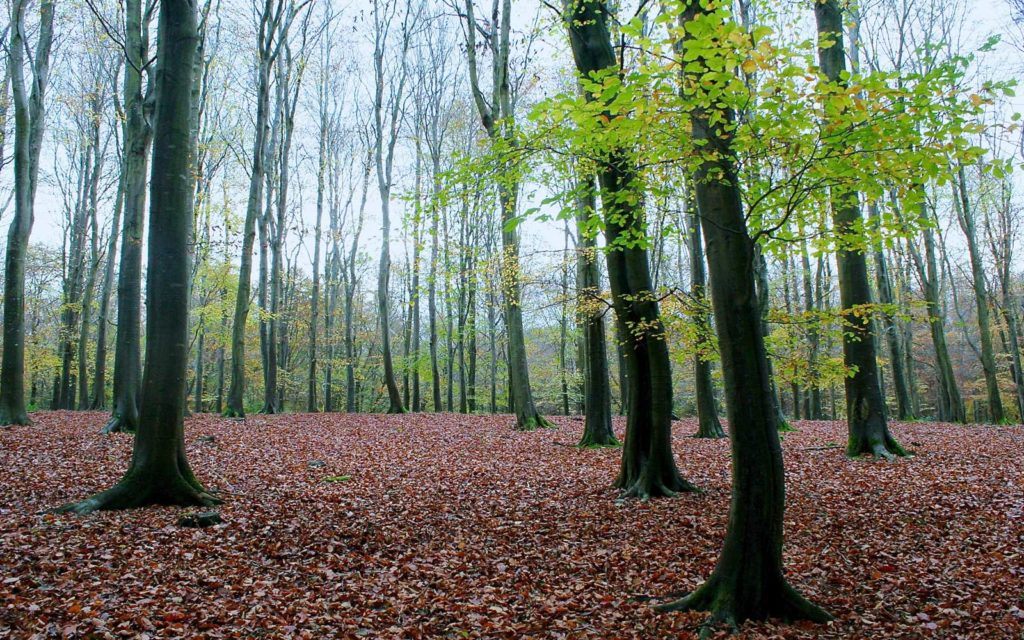
You may choose to be buried in an existing woodland, field sites where new woodland is being established, or other tranquil environments such as wildflower meadows. The sustainability of these sites hinges upon the most natural and ecologically sound approaches to ecosystem management.
It is important for a natural burial site to consider not only the short term but also long term sustainability. What will happen to the site when it is ‘full’? How will a site support itself financially and be maintained when funds from burials are no longer coming in? Arguably, a site that can support itself in another way once full is the best choice; for example, coppicing could provide an ongoing income from the land. Alternatively, agricultural sites may still be grazed or managed for various other yields. Diversification from agro-forestry into natural burial could be a good synergy.
Burial on Private Land
You might be surprised to learn that it is legal, in many cases, to be buried on private land in the UK. So if you have a large garden, or a substantial piece of woodland or other land, natural burial may be possible there. You or your loved one could potentially rest in peace under a tree, or in another favourite spot on your own property.
Certain regulations have to be followed, mostly relating to water sources, watercourses, etc: bodies must be a certain distance away from springs, waterways, irrigation or drainage channels. They must also be at a certain depth below ground, and the location must be noted.
Whichever site is chosen for a natural burial, we need to move away from the idea that bodies be corralled in cemeteries, and take a more natural, holistic approach. When we die, our bodies should not ‘take up space’ and be permanently memorialised with non-living shrines. Instead, they can feed natural systems. People can be memorialised through the thriving natural systems they sustain and that grow from their physical remains. Personally, I take comfort from the idea that when I die, I can help create and sustain new life. In a natural, green burial, we should try to enable this return to nature as much as possible.
A Sustainable Wake
A sustainable funeral is not only about what is done with the body after death. If you want the entire funeral to be green, ethical, and sustainable, the wake or other celebrations need to be considered as well.
Sustainable Funeral Food
What food will be served at the wake? As with all the food we eat, the best and most ethical option is to choose food that is:
- Grown locally
- Seasonal
- Organic and sustainably grown.
Also consider reducing or eliminating meat from the menu. And if you do opt for meat or dairy dishes, these products should be sourced from farms with good practices in terms of animal welfare and ecological matters.
Of course, you should also try to follow the five ‘R’s: refuse, reduce, reuse, repair, and recycle. Do what you can to eliminate waste in all its forms, avoid plastic packaging where possible, and donate food waste to prevent it from being thrown away.
Sustainable Funeral Flowers
When it comes to flowers for the funeral, less is more; maybe ask guests to donate to a charity rather than bringing flowers. Even without a specific request, guests could still consider other, more eco-friendly alternatives to a flower arrangement: a living plant or tree, for example. But small acts of kindness like bringing a few meals to the bereaved’s house, or even just being there for a chat, can mean a lot more.
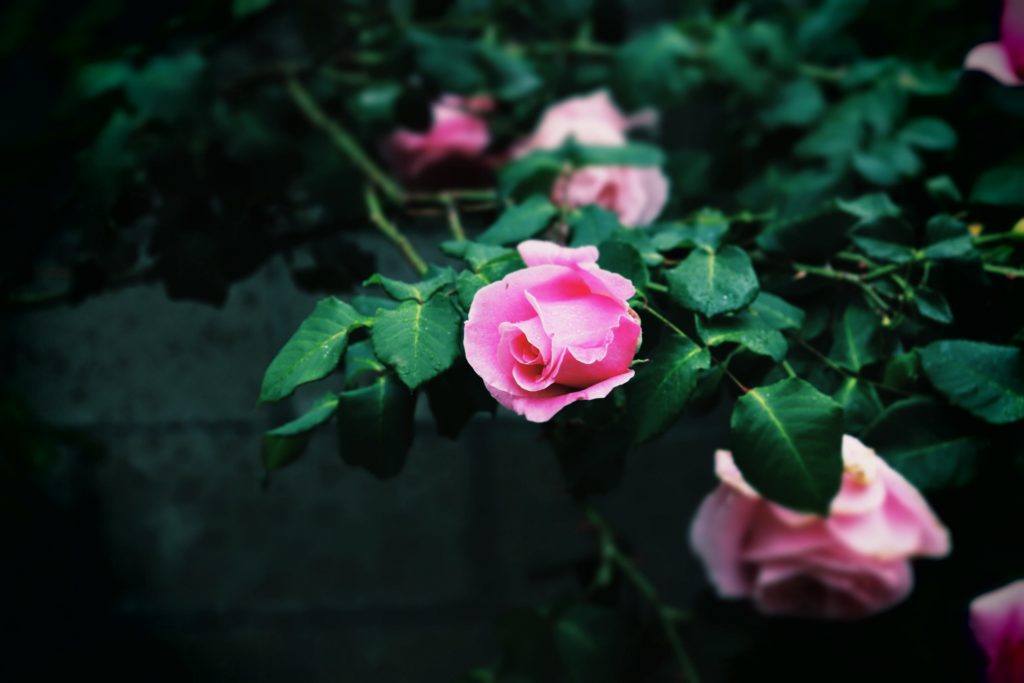
Those flowers you do choose for a funeral should be as eco-friendly as possible. This means:
- Choosing cut flowers that are local and in season.
- Opting for wildflowers rather than flowers that are hot-house grown.
- Dried flowers and foliage for more choice if the funeral is taking place in winter.
- All-natural arrangements without floral foam/Oasis or any other harmful/plastic components or packaging.
Sustainable Transportation
It is inevitable, when someone dies, that people will have to travel to pay their last respects. Encourage guests, if you can, to use more eco-friendly methods of transportation to reach the funeral: for example, taking a train rather than a plane. Encourage car-sharing to cut this carbon footprint, including when travelling from funeral to wake: use as few cars as possible, rather than travelling individually.
Sustainable House Clearance
A death in the family often means being tasked with clearing a home. Of course, the first stage will involve sorting these belongings and deciding what you and other family members would like to keep. After that, however, it is likely that there will be plenty of unwanted items. When sustainability is a key goal, make sure nothing is wasted or sent to landfill; instead, consider:
- Donating unwanted items to a charity.
- Selling secondhand items online.
- Recycling, upcycling, or repurposing old items to give them a second life, or finding someone else who can do these things for you.
Once the home has been cleared, clean it using eco-friendly, natural cleaning products.
Sustainable Wills
Finally, if contemplating your own death, an additional way to make it sustainable is through having a will drawn up. Consider leaving money or property to a charity that will help you continue to have an ethical impact after you are gone.
Featured image by Noah Silliman on Unsplash
Earth.fm is a completely free streaming service of 1000+ nature sounds from around the world, offering natural soundscapes and guided meditations for people who wish to listen to nature, relax, and become more connected. Launched in 2022, Earth.fm is a non-profit and a 1% for the Planet Environmental Partner.
Check out our recordings of nature ambience from sound recordists and artists spanning the globe, our thematic playlists of immersive soundscapes and our Wind Is the Original Radio podcast.
You can join the Earth.fm family by signing up for our newsletter of weekly inspiration for your precious ears, or become a member to enjoy the extra Earth.fm features and goodies and support us on our mission.
Subscription fees contribute to growing our library of authentic nature sounds, research into topics like noise pollution and the connection between nature and mental wellbeing, as well as funding grants that support emerging nature sound recordists from underprivileged communities.
